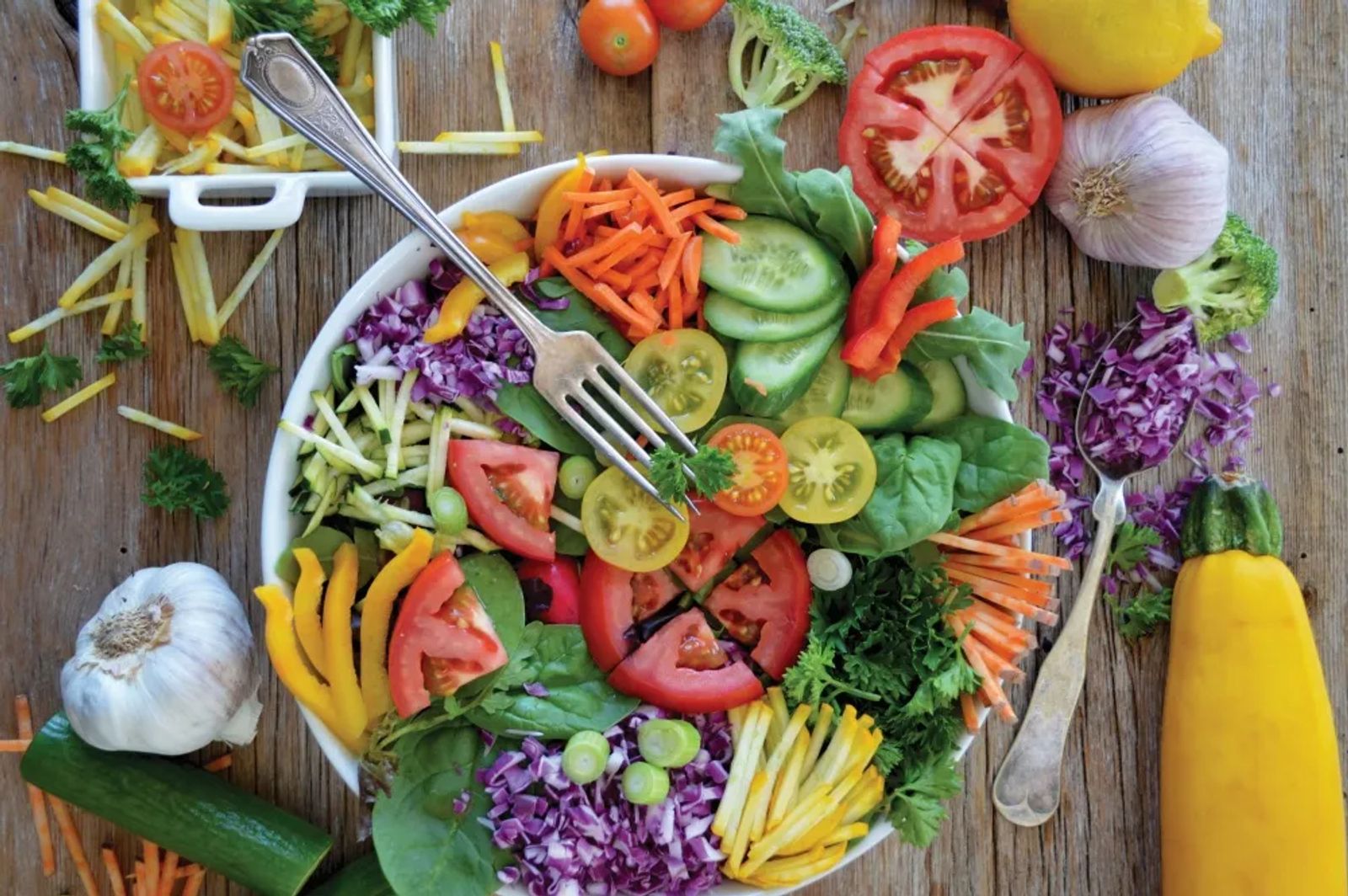
Taste the Rainbow: Why it’s Important to Eat a Colorful Diet
March 1, 2020 | by kaylee vandjelovic
Healthy eating advocates are often telling us to “eat the rainbow," but what exactly does this mean, and why is it so important? While most of us might get excited as the Skittles commercial with its similarly phrased slogan comes to mind, this advice goes far beyond those tasty, colorful round candies.
This short, three-word phrase is a simple way to remind us to incorporate a variety of fruits and vegetables into our diet. Not only does this add to the visual appeal of our plate, but it also increases the intake of vitamins and minerals (aka micronutrients) our bodies need to thrive.
Nature’s Color-Coding System
Nature has its very own “color-coding” system, with different compounds producing different hues in our foods. The best way to get all of the essential vitamins, minerals, and nutrients is to eat a variety of produce. Aim to add color each day from the five main color groups below.
Red/Pink
- Micronutrients: Produce from this category contain vitamin C, folate, and lycopene (a powerful antioxidant).
- Potential benefits: Reduced risk of some cancers, promotes heart health, and reduced inflammation.
- Examples: Red peppers, beets, red onions, radishes, tomatoes, strawberries, raspberries, apples, cherries, pomegranates, red grapes, cranberries, and watermelon.
Orange/Yellow
- Micronutrients: These bright fruits and veggies are rich in vitamins C and A, as well as beta-carotene (promotes healthy vision and cell growth).
- Potential benefits: Supports eye health, helps regulate blood sugar, and promotes anti-inflammation.
- Examples: Carrots, orange/yellow peppers, corn, sweet potatoes, winter squash (spaghetti, butternut, acorn, delicata), yellow squash, oranges, lemons, mangoes, pineapple, peaches, cantaloupe, and apricots.
Green
- Micronutrients: High in vitamin K (essential for bone and blood health), iron, magnesium, calcium, potassium, and folic acid.
- Potential benefits: Lowers blood pressure and offers anticancer properties.
- Examples: Broccoli, zucchini, green peppers, spinach, cabbage, kale, celery, brussels sprouts, green beans, arugula, peas, cucumbers, asparagus, green onions, avocado, collard greens, edamame, green apples, kiwi, green grapes, limes, and pears.
Blue/Purple
- Micronutrients: Abundant in vitamins K and C, potassium, folate, and rich in antioxidants.
- Potential benefits: Lowers blood pressure, helps to lower risk of certain cancers, supports the immune system, increases antioxidant consumption, and promotes anti-inflammation.
- Examples: Eggplant, purple potatoes, blueberries, concord grapes, plums, figs, purple (red) cabbage, blackberries, and prunes.
White/Brown
- Micronutrients: Although white and brown produce may not be as brightly colored or visually appealing as other foods, they are still a healthy choice and offer many distinct benefits, such as vitamin C and flavonoids.
- Potential benefits: Supports the immune system and healthy bones, reduces the risk of certain cancers, and lowers blood cholesterol levels.
- Examples: Cauliflower, potatoes, mushrooms, onions, parsnips, shallots, garlic, jicama, and bananas.
Some Parting Tips to Encourage Eating the Rainbow Every Day
We’ve established why it’s so important to eat an assortment of produce for our overall health, but how do we make that happen? Here are some tips for creating more colorful plates:
- Eat a beautiful breakfast – Switch up your regular morning of bagels, yogurt, or cereal, and start your day on a bright note with oatmeal topped with your favorite berries, a green smoothie, or an egg/tofu scramble loaded with mushrooms, peppers, spinach, or other veggies.
- Make vegetables the main dish – Try out some new recipes, such as Buddha bowls or vegetable curries.
- Enjoy exciting salads – Eating large, colorful salads is a great way to include tons of colorful vegetables (and fruits!) into your diet.
- Make a rainbow meal – Try creating a meal that incorporates an item from each of the five main color groups. If you have children, see if they want to help with the preparation – they might love getting involved!
Reminding ourselves to “eat the rainbow” can help guide us to making healthier choices throughout the day. It’s encouraging that simply by adding a variety of colorful produce into our diet, we can ensure that our bodies are receiving plenty of vitamins and minerals without putting in a ton of effort or thought beyond choosing an assortment of colors. So let’s get into our kitchens and create some colorful masterpieces!
Originally printed in the March 2020 issue of Simply Local Magazine
Never miss an issue, check out SLM's digital editions here!





